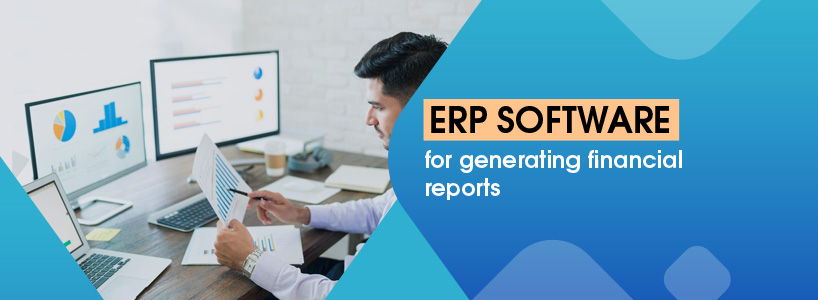Financial reports are the lifeblood of any business. They provide crucial insights into your company's health, performance, and future direction. But manually generating these reports can be a time-consuming and error-prone process. This is where Enterprise Resource Planning (ERP) Software comes in.
ERP software acts as a central hub for all your business data, integrating information from various departments like sales, inventory, and accounting. This integrated data allows ERP systems to automate financial report generation, saving you valuable time and resources.
Benefits of Using ERP for Financial Reporting
- Increased Efficiency: ERP automates data collection and report generation, eliminating the need for manual data entry and consolidation. This frees up your finance team to focus on analysis and strategic planning.
- Improved Accuracy: By eliminating manual data entry, ERP minimizes the risk of errors that can plague manual reporting processes. This ensures the accuracy and reliability of your financial data.
- Real-Time Visibility: ERP provides real-time access to financial data, allowing you to track your company's performance up-to-the-minute. This enables you to make data-driven decisions quickly and adapt to changing market conditions.
- Enhanced Compliance: ERP software can help ensure compliance with relevant accounting standards and regulations. It can automate tasks like journal entries and tax calculations, reducing the risk of errors and non-compliance issues.
- Greater Customization: ERP systems offer a wide range of reporting capabilities that can be customized to meet your specific needs. You can create reports that drill down into specific areas of your business, giving you a deeper understanding of your financial performance.
Key Financial Reports Generated by ERP
- Balance Sheet: This report provides a snapshot of your company's financial position at a specific point in time. It shows your assets, liabilities, and shareholder equity.
- Income Statement (Profit and Loss Statement): This report summarizes your company's revenue and expenses over a specific period. It shows your net profit or loss for that period.
- Cash Flow Statement: This report shows the movement of cash in and out of your business over a specific period. It is categorized into operating, investing, and financing activities.
- Accounts Receivable Aging Report: This report identifies outstanding customer invoices and analyzes how long they've been overdue. It helps you manage your credit collections and improve cash flow.
These are just a few examples, and the specific reports available will vary depending on your chosen ERP software.
Choosing the Right ERP for Financial Reporting
There are a variety of ERP solutions available on the market, each with its own strengths and weaknesses. When selecting an ERP system for financial reporting, consider the following factors:
- Your company size and industry: Different ERP systems cater to businesses of varying sizes and industries. Choose a system that is specifically designed to meet the needs of your company.
- Your budget: ERP systems can range in price from a few thousand dollars to millions of dollars. Consider your budget and choose a system that offers the features you need at a price you can afford.
- Scalability: As your business grows, your ERP system should be able to scale with you. Choose a system that can accommodate your future growth needs.
- Ease of use: The ERP system should be user-friendly for both your finance team and other departments that will be using it.
By investing in an ERP system, you can streamline your financial reporting process, improve the accuracy and reliability of your financial data, and gain valuable insights into your company's performance. This will empower you to make better business decisions and achieve your financial goals.
